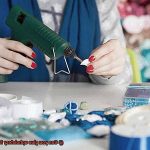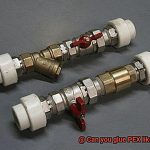Do you ever wish you could magically fuse two pieces of glass together? Whether you want to fix a shattered vase, create a stunning glass masterpiece, or mend a cracked window, I’ve got great news for you – it’s totally possible to glue two pieces of glass together. In this blog post, I’m going to give you step-by-step instructions on how to achieve a rock-solid bond between those slippery surfaces.
Before we dive into the gluing process, let’s talk safety. Glass can be tricky business, so make sure you’re suited up with all the necessary protective gear. Grab some safety goggles and gloves to shield your precious eyes and hands from any potential mishaps.
Now that we’ve got safety covered, let’s gather our materials. You’ll need a top-notch glass adhesive or epoxy specifically formulated for bonding glass. You can find these at most hardware or craft stores. Don’t forget to grab some rubbing alcohol, a lint-free cloth, masking tape, and a clamping device like a C-clamp or spring clamp.
Alright, now it’s time to get down to business. Before applying any glue, clean those glass surfaces like there’s no tomorrow. Use the rubbing alcohol and lint-free cloth to wipe away any dirt, grease, or fingerprints. This step is crucial for ensuring a strong bond and getting rid of anything that might get in the way.
Once your glass surfaces are squeaky clean and dry as a bone, it’s adhesive application time. Follow the instructions provided by the manufacturer of your chosen adhesive because different glues have different techniques. Typically though, you’ll want to squeeze out just enough adhesive onto one of the glass surfaces – don’t go overboard or things might get messy.
After applying the glue with precision (you’ve totally got this.), carefully align those two pieces of glass so they fit together perfectly like puzzle pieces. To keep everything in place while the glue works its magic, grab that masking tape and secure the two pieces together. Press it down firmly, but don’t go Hulk on it – we want to avoid any accidental glass-breaking situations.
Now comes the waiting game – let the glue cure. The length of time for curing depends on the adhesive and room temperature, so consult the instructions from the manufacturer to be safe. Typically, you’re looking at a few hours to several days for that bond to become rock solid. Whatever you do, resist the urge to mess with or move those glass pieces during this crucial period – we want that bond to
What is Glass?
Contents
- 1 What is Glass?
- 2 Types of Adhesives Suitable for Bonding Glass
- 3 The Benefits of Using UV-Curing Adhesives
- 4 How to Prepare the Glass Surfaces Before Applying Adhesive
- 5 Alternatives to Glue for Bonding Glass
- 6 Factors That Affect the Success of Glue Bonding
- 7 Different Types of Cyanoacrylate Adhesives
- 8 Tips for Achieving a Strong and Durable Bond with Glass
- 9 Conclusion
Its exceptional properties and adaptability have elevated it to a crucial role in various industries. This article will delve into the concept of glass, its composition, and the extensive range of applications it serves.
Composition and Manufacturing:
The primary components of glass are silica (sand), soda ash, and limestone. These raw materials are subjected to high temperatures, causing them to melt and form a liquid. Rapid cooling then solidifies the liquid into a rigid material. The composition of glass can vary depending on its intended use. For instance, window glass is produced by floating molten glass on molten tin, while tempered glass is created by subjecting regular glass to intense heat followed by rapid cooling.
Properties of Glass:
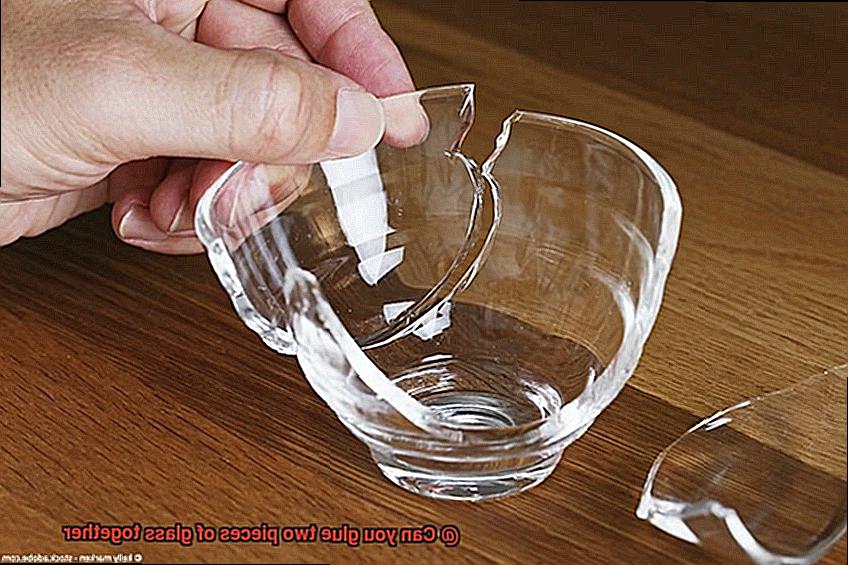
Glass boasts several unique properties that make it an attractive material for various purposes:
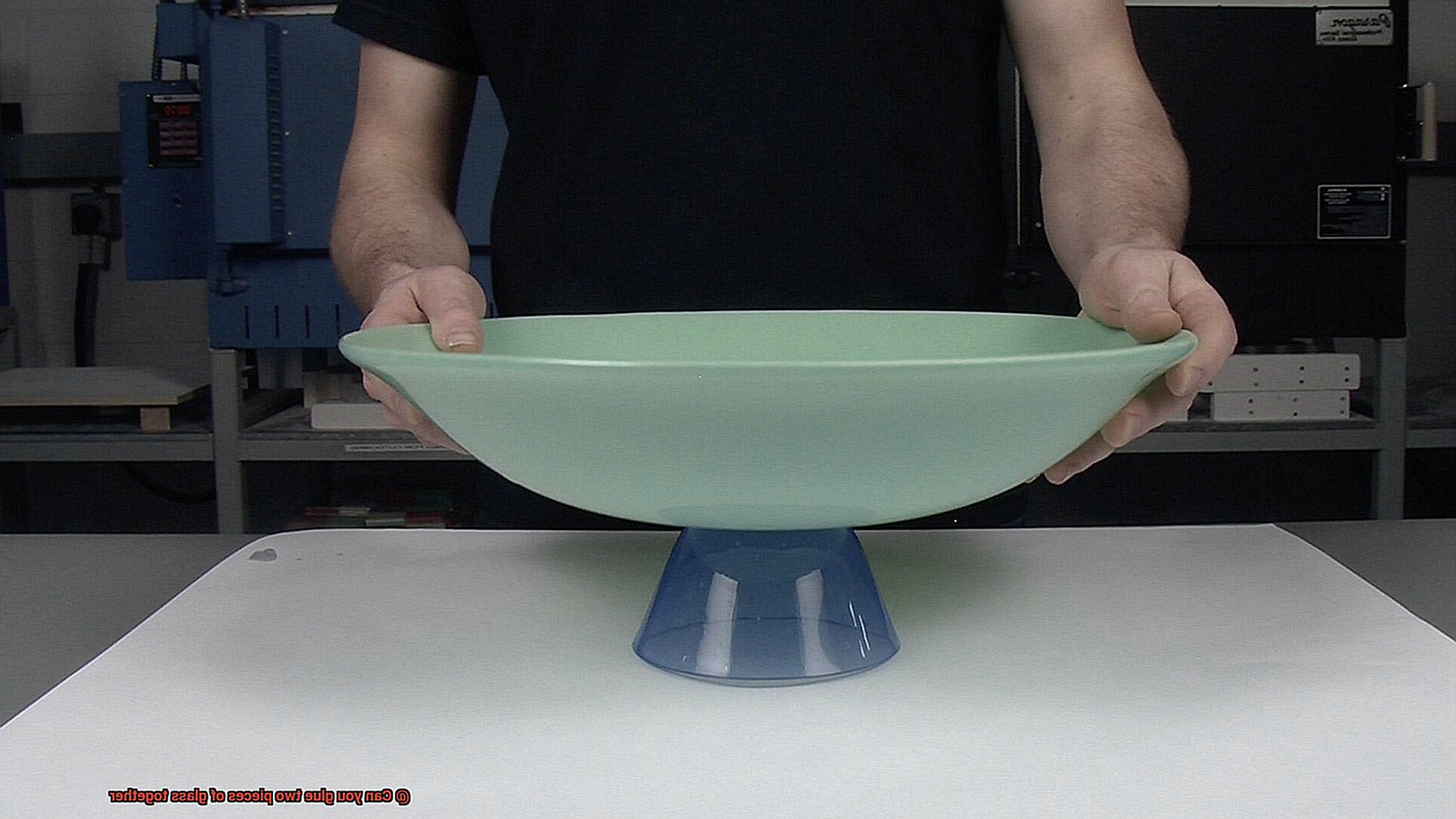
- Transparency: Glass possesses the remarkable ability to transmit light without distortion. This attribute renders it ideal for applications such as windows, lenses, and display screens.
- Smoothness and Chemical Resistance: With its sleek surface, glass resists chemical corrosion, remaining unaffected by most chemicals. This quality allows it to be used for storing substances without the risk of contamination or degradation.
- Electrical Insulation: As an excellent electrical insulator, glass ensures safety in electrical systems by not conducting electricity.
- Durability: While glass is relatively strong, it can be brittle and prone to break under intense impact or pressure. However, it exhibits exceptional resistance to high temperatures without melting or deforming, making it suitable for use in ovens and laboratory equipment.
Applications of Glass:
The versatility of glass has led to its widespread use across numerous industries:
- Construction: Glass finds application in windows, doors, skylights, and architectural facades. Apart from enhancing aesthetics, it offers functional benefits like energy efficiency and sound insulation.
- Automotive: Glass plays a vital role in windshields, side windows, and rear windows of vehicles. It provides visibility and protects passengers from external elements.
- Electronics: The production of display screens for televisions, smartphones, tablets, and computer monitors relies heavily on glass. Its transparency and smoothness enhance the visual experience.
- Household Products: Glass is extensively used in the manufacturing of food and beverage containers due to its non-porous nature and resistance to odors and flavors. Additionally, it finds use in tabletops, mirrors, and decorative items.
Types of Adhesives Suitable for Bonding Glass
Wonder no more, my curious friends, for there are adhesives that possess the magic to create a strong bond between glass surfaces. Let us embark on a journey into the world of adhesives and unravel their secrets.
Epoxy Adhesives: The Superheroes of Bonding
Epoxy adhesives emerge as the champions in bonding glass. Like superheroes, they possess exceptional strength and durability. Consisting of a resin and a hardener, these adhesives must be mixed before application. Once cured, epoxy forms an unbreakable bond between glass surfaces. Whether crafting jewelry or fixing household items, epoxy is the adhesive superhero you need.
UV-Curing Adhesives: Illuminating Bonds
Imagine an adhesive that cures with the power of light – enter UV-curing adhesives. Applied as a liquid, they solidify under ultraviolet light. These adhesives bond swiftly and offer high transparency, making them perfect for projects where aesthetics are paramount. From assembling electronics to creating dazzling optical devices, UV-curing adhesives bring your glass bonding dreams to life.
Silicone Adhesives: Flexibility and Resilience
When it comes to extreme temperatures and flexibility, silicone adhesives reign supreme. They endure scorching summers and freezing winters without compromising their bonding capabilities. Moreover, silicone adhesives excel at sealing glass joints and attaching glass to other materials. From automotive repairs to outdoor projects, silicone adhesives have your back.
Cyanoacrylate Adhesives: The Speedy Solution
For small glass projects or quick fixes, cyanoacrylate adhesives – also known as super glue – are your go-to solution. These adhesives bond instantly, providing rapid solutions to your bonding needs. It is important to note that they may not be as strong as other adhesives, making them ideal for lighter loads.
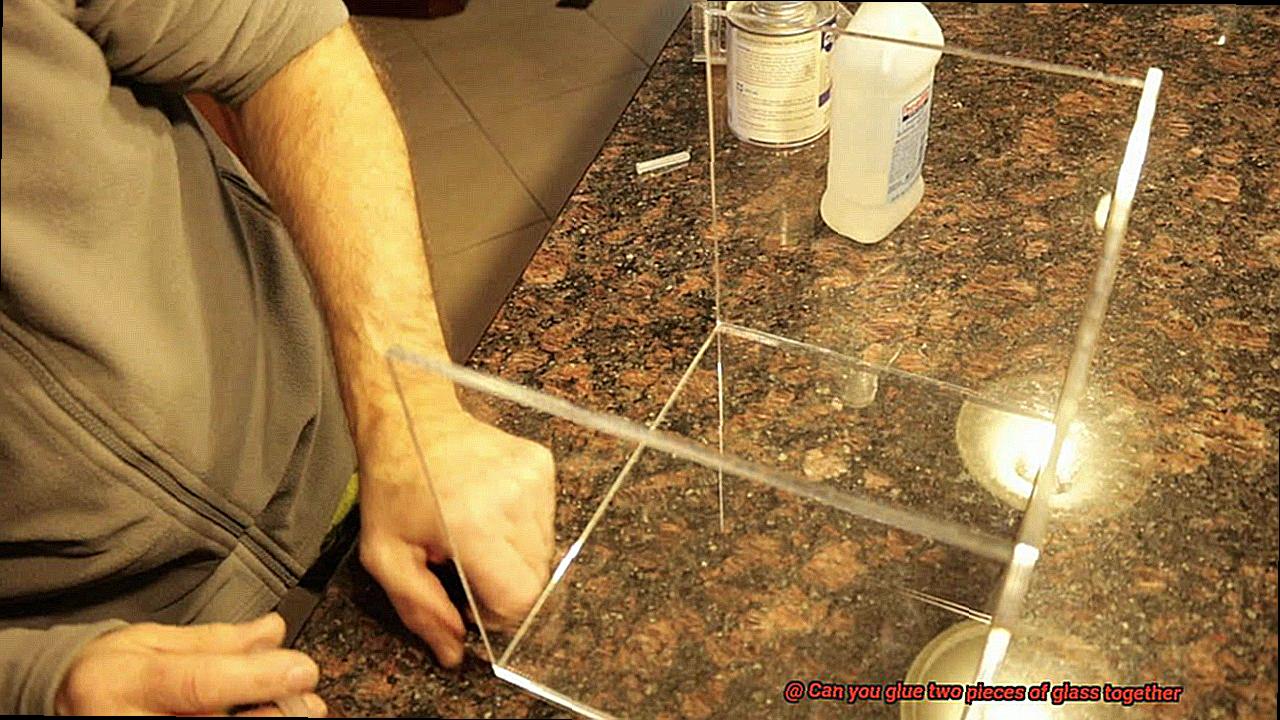
Polyurethane Adhesives: Strength and Resistance Unleashed
Polyurethane adhesives offer another viable option for bonding glass. They form a robust bond and withstand water and chemicals. Although they may not possess the same transparency as other adhesives, they remain reliable choices for projects requiring endurance and resistance.
The Benefits of Using UV-Curing Adhesives
Well, let me introduce you to the magical world of UV-curing adhesives. These adhesives are the superheroes of the bonding world, and when it comes to gluing glass, they are truly a game-changer.
The Benefits of Using UV-Curing Adhesives
- Lightning-Fast Curing Time: One of the biggest advantages of using UV-curing adhesives is their lightning-fast curing time. Unlike traditional adhesives that take forever to dry, UV-curing adhesives can cure in a matter of seconds to minutes. Just imagine being able to instantly bond two pieces of glass together. This not only saves you precious time but also increases efficiency in your projects.
- Incredible Bond Strength: But wait, there’s more. UV-curing adhesives also offer incredible bond strength. Once cured, they form strong and durable bonds that can withstand all sorts of stresses and impacts. This is especially important when it comes to bonding glass, as it requires a reliable adhesive that will ensure a secure and long-lasting bond.
- Transparency: Not only are UV-curing adhesives strong, but they also have another superpower – transparency. These adhesives can bond transparent materials like glass without leaving any visible residue or discoloration. This means that your beautifully bonded glass surfaces will remain flawless and aesthetically pleasing.
- Resistance to Temperature and Moisture: But the benefits don’t stop there. UV-curing adhesives are also highly resistant to temperature and moisture. They can withstand high temperatures without losing their adhesive properties or degrading. And when it comes to moisture, these adhesives are like superheroes with an umbrella – they are resistant to it. This is essential when bonding glass, as it is often exposed to humid or wet environments.
- Environmental Friendliness: Now, let’s talk about being environmentally friendly. UV-curing adhesives are the eco-warriors of the adhesive world. They are typically solvent-free, which means they do not release harmful volatile organic compounds (VOCs) during the curing process. So, not only are you bonding glass, but you’re also saving the planet.
- Versatility: And guess what? UV-curing adhesives are versatile too. They can be applied using various techniques like dispensing, spraying, or even through automated processes. This flexibility allows for different types of bonding applications, making them perfect for all your glass bonding needs.
- Long Shelf Life: But wait, there’s even more good news. UV-curing adhesives have a long shelf life and do not require special storage conditions. You can store them for extended periods without worrying about losing their adhesive properties. This is especially beneficial for industries that require adhesive materials in bulk.
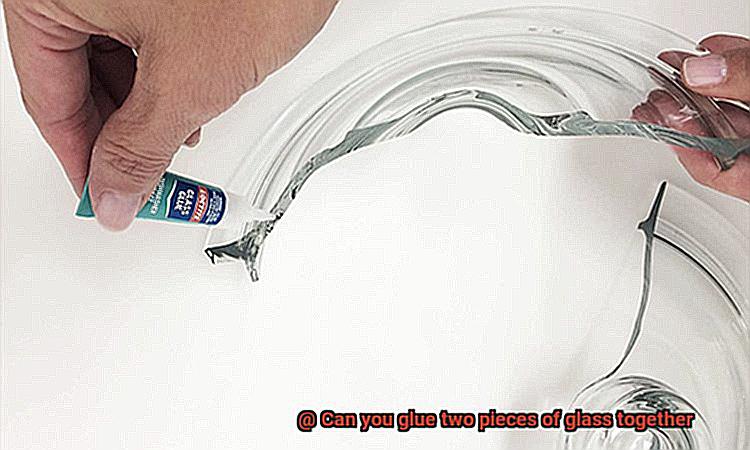

How to Prepare the Glass Surfaces Before Applying Adhesive
Today, we embark on a journey that will unleash your inner adhesive artist and ensure your bonding endeavors are nothing short of extraordinary.
Cleanliness is Next to Adhesive Greatness:
To commence our adhesive adventure, we must first create a pristine canvas. With your trusty mild detergent or glass cleaner in hand, embark on a meticulous scrubbing mission. Rid those glass surfaces of any dirt, dust, or vexing fingerprints using a lint-free cloth or paper towel. Remember, we strive for impeccably clean surfaces that will facilitate optimal bonding.
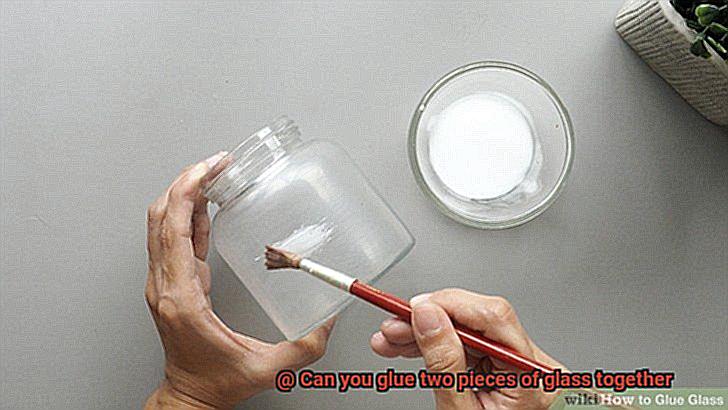
Rubbing Alcohol: The Secret Weapon:
Now that your glass gleams with cleanliness, it’s time to unveil the secret weapon – rubbing alcohol. This superhero solution swoops in to eradicate any lingering oils, stubborn fingerprints, or sneaky contaminants that may have evaded the initial cleaning process. Soak a clean cloth or cotton ball in rubbing alcohol and meticulously wipe down every nook and cranny of the glass surface. Bid adieu to those tenacious residues.
Sanding: Rough it Up (Gently):
Smooth glass surfaces can pose a challenge when it comes to bonding. Fear not, for sanding comes to the rescue – adding a touch of gritty texture to elevate your adhesive game. Arm yourself with fine-grit sandpaper and gently sand the areas where adhesive will be applied. Remember, we seek a slightly roughened texture, not a masterpiece carved from glass.
Banish Loose Particles:
After sanding, it’s time for an encore performance – a cleanup extravaganza. Utilize a soft brush or harness the power of compressed air to sweep away any loose particles or debris that may have accumulated during the sanding process. Our glass surfaces must be spick and span, primed for adhesive mastery.
Optional Primer Power-Up:
Sometimes, our adhesive adventures call for an extra boost. In such cases, applying a primer can be a game-changer. Primers establish a chemical bond between the glass surface and the adhesive, enhancing adhesion potency. Follow the manufacturer’s instructions diligently and allow the primer sufficient drying time before delving into adhesive application.
Alternatives to Glue for Bonding Glass
When it comes to bonding glass, glue is often the default choice. But did you know that there are alternative methods available that can provide equally strong and durable bonds while offering unique advantages? In this article, we will dive into the exciting world of alternatives to traditional glue for bonding glass, giving you the opportunity to unleash your adhesive artistry.
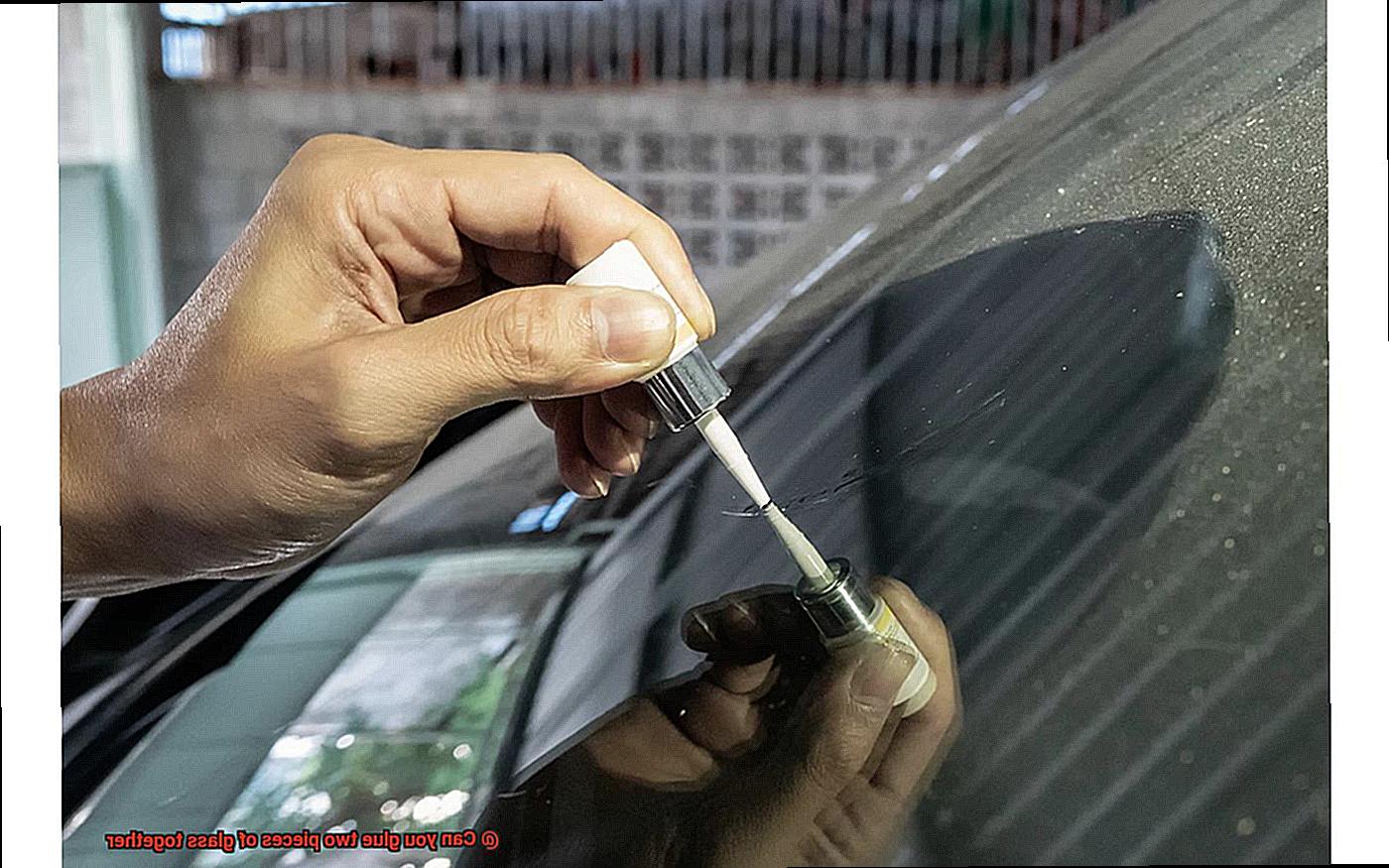
UV-Curable Adhesive: Illuminate Your Bonding Process
One exceptional alternative is UV-curable adhesive. This liquid adhesive is skillfully applied to the glass surfaces and then cured using ultraviolet light. The magic happens as the adhesive transforms into a hard and transparent bond in mere seconds. Popular in industries such as electronics and jewelry making, UV-curable adhesive provides both strength and precision, allowing you to create breathtaking glass designs with ease.
Epoxy Resin: Forging Lasting Connections
If durability is your top priority, look no further than epoxy resin. This versatile bonding option consists of two components that are expertly mixed together before application. Once applied, epoxy resin forms a robust and enduring bond that can withstand the test of time. Whether you’re creating decorative glass pieces or functional structures, epoxy resin offers excellent resistance to weathering and moisture damage, ensuring your creations stand strong for years to come.
Silicone Adhesive: Seamlessly Embrace the Elements
For outdoor or high-temperature environments, silicone adhesive is your trusty companion. With its flexible nature, waterproof properties, and remarkable resistance to temperature changes, silicone adhesives are perfect for bonding glass in challenging conditions. Transparent and adaptable, they effortlessly create seamless connections between glass pieces, making them an ideal choice when aesthetics are paramount.
Double-Sided Adhesive Tapes: Swift and Stealthy Bonding
When time is of the essence or an invisible bond is desired, double-sided adhesive tapes step up to the plate. These adhesive wonders possess stickiness on both sides and can be effortlessly applied to glass surfaces. Despite their seemingly delicate nature, they provide a surprisingly strong bond, making them a go-to option for quick and convenient glass bonding.
Mechanical Fasteners: Power Up Your Bond
In certain scenarios, mechanical fasteners such as screws or clamps can be employed alongside other bonding methods to reinforce the strength and stability of glass bonds. Particularly useful when dealing with larger or heavier glass pieces, these fasteners add an extra layer of security, ensuring your creations remain intact even under intense pressure.
Factors That Affect the Success of Glue Bonding
Achieving a strong and durable bond between two pieces of glass requires careful consideration of various factors. From surface preparation to adhesive selection and environmental conditions, each aspect plays a crucial role in the success of glue bonding. Let’s explore these factors in detail:
- Surface Preparation: Properly preparing the glass surfaces is essential for a successful bond. Cleaning the surfaces thoroughly and removing any contaminants like dirt, grease, oil, or residue is crucial. Using a glass cleaner or mild detergent solution can help eliminate impurities. Additionally, using isopropyl alcohol or acetone can ensure that no traces of oils or residues remain. A clean and dry surface enhances the adhesive’s ability to bond effectively with the glass.
- Adhesive Selection: The choice of adhesive is key to a successful bond. Different adhesives have unique properties and suitability for various applications. Epoxy, cyanoacrylate (super glue), UV-curing adhesives, and silicone-based adhesives are commonly used for bonding glass. Consider factors such as the type of glass, intended use, and desired bond strength when selecting an adhesive.
- Glass Type: The type of glass being bonded affects the success of glue bonding. Glass can vary in composition, thickness, and surface texture, which impacts its compatibility with certain adhesives. For example, borosilicate glass has low thermal expansion and high thermal shock resistance, while tempered glass requires specialized adhesives due to its surface treatment during manufacturing. Understanding the properties of the glass being bonded is essential for selecting the appropriate adhesive.
- Temperature and Humidity: Environmental conditions during the bonding process influence the effectiveness of glue bonding. Temperature and humidity levels affect the curing and drying time of adhesives.
It is important to follow the manufacturer’s recommendations regarding the optimal temperature and humidity range for adhesive application. Extreme temperatures or high humidity can result in inadequate bonding or prolonged curing times, compromising the strength of the bond.
- Bonding Pressure: Applying the right amount of pressure during bonding is critical. Proper pressure ensures maximum contact between the adhesive and the glass, enhancing adhesion. Depending on the adhesive used, methods like clamping, pressing, or using weights may be employed to apply the necessary pressure. Follow the adhesive manufacturer’s instructions for recommended pressure and curing time for optimal results.
Different Types of Cyanoacrylate Adhesives
Well, wonder no more. In this blog post, we will explore the different types of cyanoacrylate adhesives specifically designed for bonding glass. From super glues to UV-curing adhesives, we’ll uncover the secrets behind creating a strong and beautiful bond between glass surfaces.
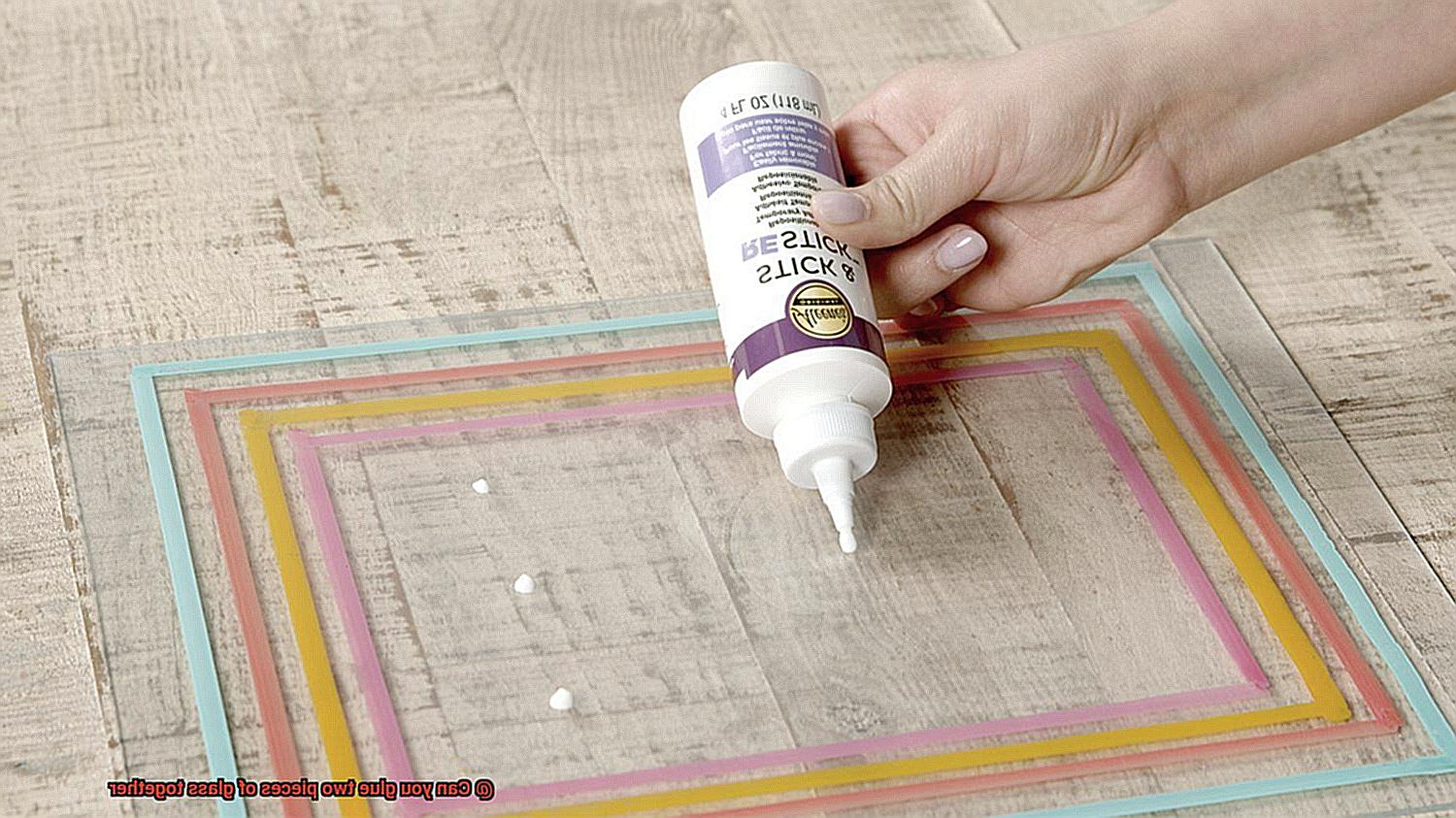
Super Glues: The Quick Fixers
If you’re looking for instant bonding power, super glues (also known as cyanoacrylate adhesives) are your go-to choice. These magical glues form a strong bond quickly and are perfect for small glass projects. Just a dab of super glue can bring your broken glass pieces back together in no time.
Gel-based Adhesives: The Control Freaks
For those tricky vertical or overhead surfaces, gel-based cyanoacrylate adhesives come to the rescue. With their thicker consistency, these adhesives give you better control and prevent drips. Plus, they provide a longer working time before setting, allowing you to make adjustments and ensure a perfect bond.
Transparent Bonding: The Invisible Heroes
When it comes to bonding glass to glass or other transparent materials, you need an adhesive that dries clear and leaves no visible residue. That’s where specialized cyanoacrylate adhesives for glass shine. These clear wonders create seamless bonds that are practically invisible, making your glass project look like pure magic.
Glass-to-Other Materials: Strength and Durability
Sometimes, you need to bond glass to materials like metal or plastic. That’s when you call in the heavyweights – cyanoacrylate adhesives specially formulated for bonding glass to other materials. These adhesives are built tough, providing enhanced strength and durability to withstand any stress or environmental conditions.
Tips for Success: Preparation is Key
To ensure a successful glass bonding project, proper surface preparation is crucial. Clean the glass surfaces thoroughly, removing any dirt, oils, or contaminants that could interfere with the bonding process. It’s also a good idea to test the adhesive on a small area or scrap piece of glass before diving into your main project.
Tips for Achieving a Strong and Durable Bond with Glass
Creating a strong and durable bond between glass surfaces may seem challenging, but with the right techniques and materials, it can be achieved. In this article, we will explore some tips and tricks to help you achieve a successful bond when working with glass.
Prepare the Surface:
To ensure a strong bond, begin by preparing the surface of the glass. Clean the glass thoroughly using a mild detergent or glass cleaner and a lint-free cloth. Make sure to remove any dirt, grease, or residue that could hinder the bonding process. For stubborn residues, use isopropyl alcohol to effectively remove them.
Choose the Right Adhesive:
Not all adhesives are suitable for bonding glass. It is crucial to select an adhesive specifically designed for glass bonding. Popular options include cyanoacrylate (super glue), epoxy, silicone, and UV-curing adhesives. Each type of adhesive has unique properties and strengths, so choose the one that best suits your specific application.
Apply Adhesive Evenly:
When applying the adhesive, ensure an even and thin layer on both surfaces that need to be bonded together. Excessive amounts of adhesive can lead to messy joints and weaken the bond. Always follow the manufacturer’s instructions for proper application techniques.
Apply Pressure:
To achieve a strong bond, it is often necessary to apply pressure on the glued surfaces. This helps maximize contact between the adhesive and the glass, resulting in better adhesion. Depending on the size and shape of the glass pieces, use clamps, weights, or tape to hold them together firmly while the adhesive cures.
Allow Proper Curing Time:
Different adhesives have varying curing times. It is crucial to allow sufficient time for the adhesive to fully cure before subjecting the bonded glass to any stress or load. Follow the manufacturer’s instructions regarding the recommended curing time. Factors like temperature and humidity can also affect curing time, so consider these variables as well.
WKIoHKDH0F4″ >
Also Read: How to Glue Plexiglass to Glass?
Conclusion
Yes, it is possible to glue two pieces of glass together.
By using a specialized glass adhesive, you can create a strong bond between the two surfaces. This adhesive is designed to withstand the unique properties of glass, such as its smooth and non-porous surface.
With the right technique and proper preparation, you can achieve a secure and durable bond that will hold the two pieces of glass together.




